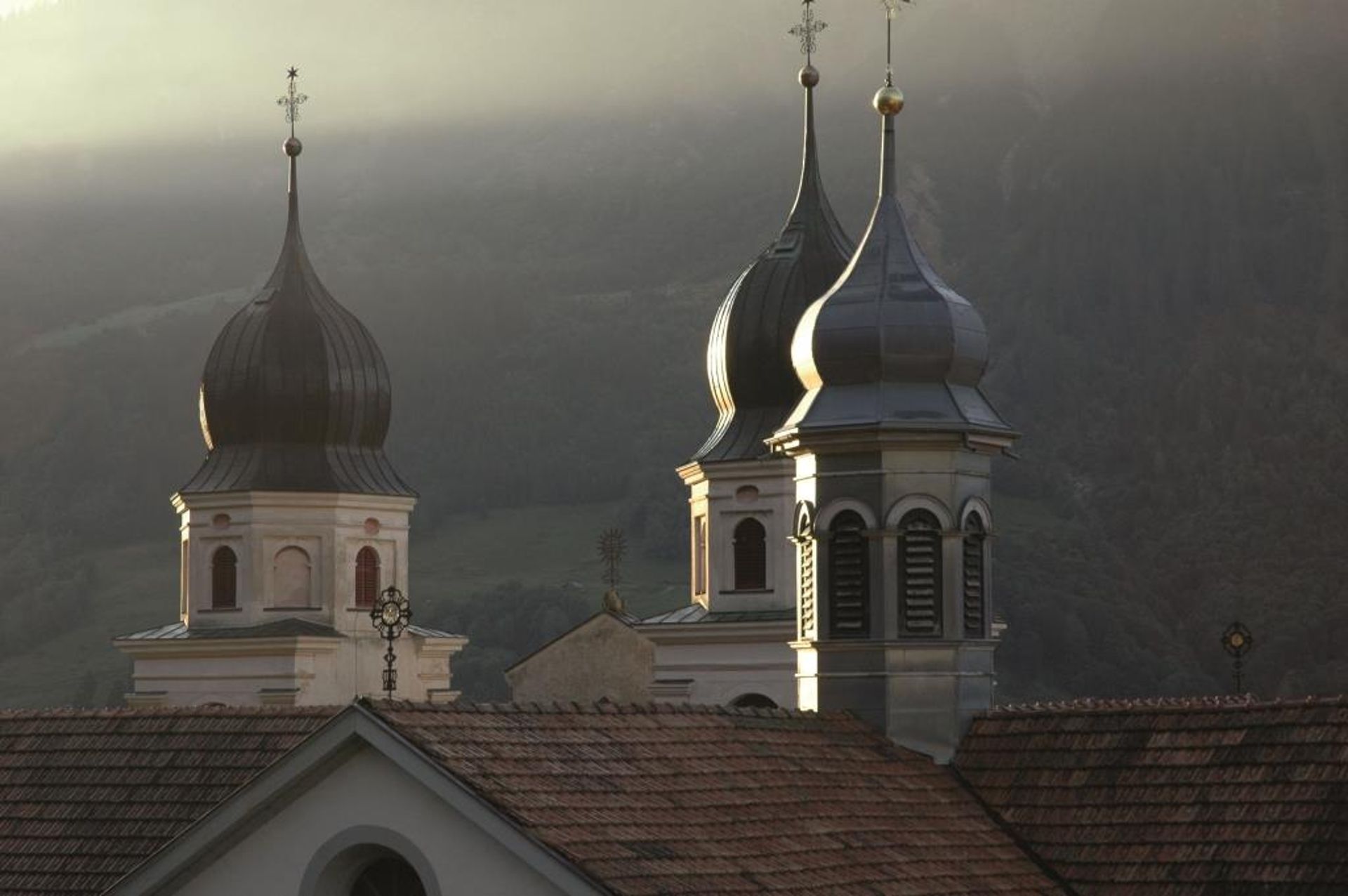
Discover Disentis Monastery - A piece of history in the heart of Switzerland
The enormous Benedictine abbey in the small mountain village
You can see it from a distance: The enormous Benedictine abbey, which barely fits in the small mountain village. The Disentis Abbey is open daily for visits. It features a museum, the magnificent St. Martin monastery church, and the abbey shop.
1,400 years of history
The Franconian Sigisbert, who was accompanying wandering Celtic monks as they came up the Rhine, built a hermitage in the uninhabited area of Desertina. He was given support by Placidus, a powerful Rhaetian. The territorial lord Praeses Victor in Chur saw this as a threat to the long-protected special status of Churrätien, so he had Placidus killed. According to tradition, Placidus was then named a martyr and Sigisbert, a confessor. The Disentis Abbey was built in the year 700 around their graves. The feast of the Disentis founding saints Placidus and Sigisbert is July 11. It is celebrated on the Sunday before.
Secondary school and boarding school
As is customary at abbeys, knowledge has also been passed on in Disentis for hundreds of years. Today, the Benedictines run their own school. The secondary school provides instruction to Swiss and international students on the way to obtaining their leaving certificate – locals as day students, those from farther away, in the boarding school. The monks make up part of the faculty, passing on Saint Benedict’s philosophy of life – prayer, study, work. And the school’s high success rate underscores the value of this way of life.
Andermatt, Sedrun and Disentis
It is also evident from the abbey’s history that the regions to the north and south of the Oberalp Pass belonged together even earlier. Belonging to Disentis was the Lukmanier Pass, which the German Emperors Otto l and Frederick Barbarossa crossed during their journeys south. The abbey therefore received landholdings that extended as far as Lombardy, which resulted in the establishment of a monastic state of considerable size. The peasant lands stretched from Brigels in the east to the Furka Pass in the west. The situation remained that way until the sell-off of the Ursern Valley area in 1649, at which time the state drew its boundaries around the smaller territory of Tavanasa to Selva. It took nearly another 400 years until the Ursern Valley and Surselva drew close together again, thanks to the merger of Andermatt, Sedrun and Disentis – Another plus of Andermatt, Sedrun and Disentis.
You can find more information on the website of the Disentis Abbey (available only in German).






